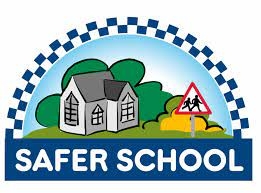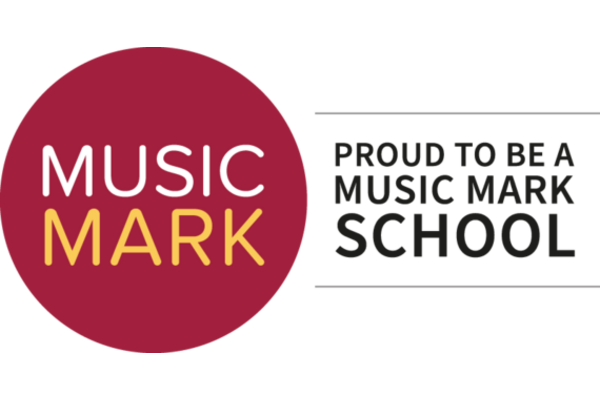 Learning to read does not happen all at once. It involves a series of stages that lead, over time, to independent reading and to fluency.
Learning to read does not happen all at once. It involves a series of stages that lead, over time, to independent reading and to fluency.
The best time for children to start learning to read is when they are very young, usually at the preschool level. This is when they are best able to start developing basic reading skills.
Stages:
1. The pre-reader and the beginning reader:
likes to look at books and likes to be read to
likes to behave like a reader – for example, holds books and pretends to read them
learns about words by looking at picture books and playing with blocks that have letters on them, magnetic letters, and so on
learns about words from songs, rhymes, traffic signs, and logos on packages of food
learns how text works – for example, where a story starts and finishes and which way the print proceeds
begins to understand that his or her own thoughts can be put into print
uses pictures and memory to tell and retell a story
2. The emerging reader:
is ready to receive instructions about reading
learns that text is a common way to tell a story or to convey information
begins to match written words to spoken words and to perceive relationships between sounds and letters
begins to experiment with reading, and is willing to try to say words out loud when reading simple texts
finds the pictures helpful in understanding the text, and learns that the words convey a message consistent with the pictures
3. The early reader:
develops more confidence and uses a variety of methods, such as relying on visual cues, to identify words in texts
adapts his or her reading to different kinds of texts
recognises many words, knows a lot about reading, and is willing to try new texts
4. The fluent reader:
thinks of reading as a good thing and does it automatically
uses a variety of methods to identify words and their meanings
can read various kinds of texts and predict events in a story
relates the meaning of books to his or her own experience and knowledge, and understands what is new
It takes time to pass through each of these stages, and your child will need plenty of attention and support as he or she moves through them. You can play a leading role in helping your child acquire the reading skills he or she needs to succeed!
How can I help my child?
As a parent, you are your child’s first and most important teacher. When you help your child learn to read, you are opening the door to a world of books and learning. Reading aloud to children is the best way to get them interested in reading. Before long they will grow to love stories
and books. Eventually they will want to read on their own. With the help of parents, children can learn how to read and can practise reading until they can read for their own enjoyment. Then they will have a whole world of information and knowledge at their fingertips!
Reading can be a family activity. Spending time with word games, stories, and books will help your child to:
gather information and learn about the world
learn how stories and books work – that they have beginnings, endings, characters, and themes
build a rich vocabulary by reading and talking about new words
learn how to listen and how to think
learn the sounds of language and language patterns
fall in love with books
It’s natural to want to compare your child’s reading abilities with those of other children of the same age, but not all children develop reading skills at the same pace.
What tips can I use to help my child learn to read?
Tip 1 – Talk to Your Child
Oral language is the foundation for reading. Listening and speaking are a child’s first introduction to language.
Talking and singing teach your child the sounds of language, making it easier for him or her to learn how to read.
Here are some things you can do to help your child build an appreciation for words and language:
Tell family stories about yourself, your child’s grandparents, and other relatives.
Talk to your child as much as possible about things you are doing and thinking.
Ask your child lots of questions.
Encourage your child to tell you what he or she thinks or feels.
Ask your child to tell you about his or her day – about activities and games played.
Be patient! Give your child time to find the words he or she wants to use.
Sing songs, such as the alphabet song, and recite nursery rhymes, encouraging your child to join in.
Play rhyming and riddle games.
Tip 2 – Make Reading Fun
Reading aloud can be a lot of fun, not just for parents but for all family members. Here are some ways to get the most out of reading to your young child:
Read with drama and excitement! Use different voices for different characters in the story. Use your child’s name instead of a character’s name. Make puppets and use them to act out a story.
Re-read your child’s favourite stories as many times as your child wants to hear them, and choose books and authors that your child enjoys.
Read stories that have repetitive parts and encourage your child to join in.
Point to words as you read them. This will help your child make a connection between the words he or she hears you say and the words on the page.
Read all kinds of material – stories, poems, information books, magazine and newspaper articles, and comics.
Encourage relatives and friends to give your child books as gifts.
Take your child to the library and look at interactive CD-ROMs and the Internet, as well as books.
Subscribe to a magazine for your child. He or she will love receiving mail!
The more you enjoy the reading experience, the more your child will enjoy it.
Tip 3 – Read Every Day
Children love routine, and reading is something that you and your child can look forward to every day. By taking the time to read with your child, you show him or her that reading is important and fun to do.
Try to read with your child as often as possible. It’s the best thing you can do to help him or her learn at school! It also allows you to spend time together in an enjoyable way and to build a strong and healthy relationship.
Start reading with your child when he or she is very young.
Set aside a special time each day when you can give your full attention to reading with your child.
Choose a comfortable spot to read, where you can be close to your child. Make it your “reading place”! Set aside a special shelf in that area for your child’s books.
Choose a variety of books.
Vary the length of reading time according to your child’s age and interests. For young children, several short sessions (of 10 minutes each) may be better than one long session (of 30 minutes).
Read slowly so that your child can form a mental picture of what is happening in the story.
Praise your child for his or her ideas and participation!
When you and your child are away from home, take along books, magazines, and books-on-tape for your child to read and listen to.
Keep reading to your child even after he or she has learned to read. By reading stories that will interest your child but that are above his or her reading level, you can stretch your child’s understanding and keep alive the magic of shared reading.
Tip 4 – Set an Example
As a parent, you are your child’s most important role model. If your child sees you reading, especially for pleasure information, he or she will understand that reading is a worthwhile activity.
You can also share many daily reading activities with your child. Here are some ideas:
Read recipes, food labels, schedules, maps, instructions, and brochures.
Read traffic signs and signs in stores and restaurants.
Look up information in cookbooks, manuals, phone books, atlases, and dictionaries.
Read greeting cards, letters, and e-mail messages to and from relatives and friends.
Tip 5 – Talk About Books
Talking about the books you read is just as important as reading them. Discussing a story or a book with your child helps your child understand it and connect it to his or her own experience of life. It also helps enrich your child’s vocabulary with new words and phrases.
Here are some ways to help your child acquire skills in comprehension, reasoning, and critical thinking:
Ask your child about the kinds of books he or she would like to read.
Talk to your child about your favourite books from childhood, and offer to read them.
Encourage your child to ask questions and to comment on the story and pictures in a book – before, during, and after reading it.
Look at the cover and the title of a book with your child, and ask your child what he or she thinks might happen in the story.
Think out loud about the story as you read, and encourage your child to do the same. For example, ask, “Does this make sense? Why or why not?”
Give your child time to think about the story, and then ask him or her about it again a few days later.
Tip 6 – Listen to your child read
As your child learns to read, listen to him or her read aloud. Reading to you gives your child a chance to practise and
to improve his or her reading skills.
As you listen to your child, remember that your reactions are important. Above all, listen without interrupting. Be enthusiastic and praise your child as often as you can. If possible, be specific with your praise so that your child knows what he or she is doing well.
Show your child that you are enjoying the story by indicating interest and by asking questions.
Give your child time to figure out tricky words, and show your child how he or she can learn from mistakes.
Try to have your child read aloud to you at times when there will be no interruptions.
Make sure that your child selects books that aren’t too difficult. Don’t worry if the books your child chooses are a little easier than the ones he or she reads at school.
Encourage your child to “listen” to his or her own reading. Listening will help him or her hear mistakes and try to fix them.
Take turns reading with your child, especially if he or she is just beginning to read, or try reading together.
Talk about a story after your child has read it, to make sure that he or she understands it.
Don’t forget to encourage your child to read on his or her own!
Tip 7 – Show that you value your child’s efforts
Remember, your child needs to know that you value his or her efforts. Children learn to read over time, with lots of practice and support from parents and teachers.
Here are some ways you can show your child that you have confidence in his or her ability to learn:
Be patient and flexible in your efforts to help your child.
Show your child that you see him or her as a growing reader, and praise his or her efforts to learn.






